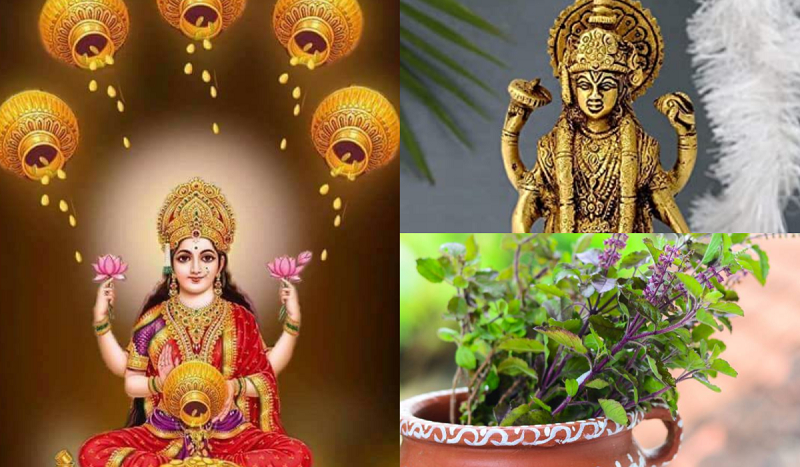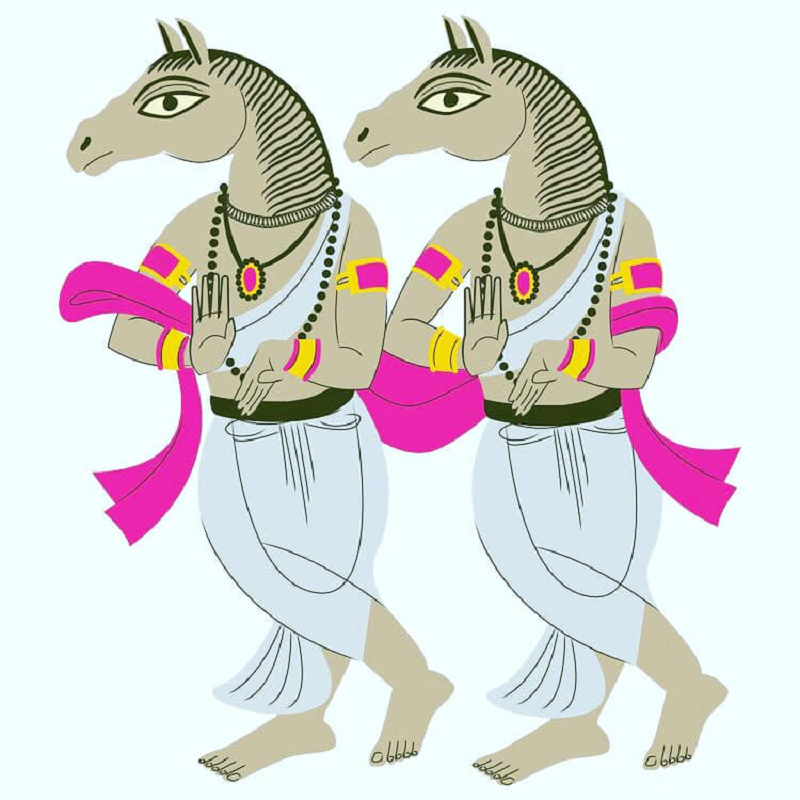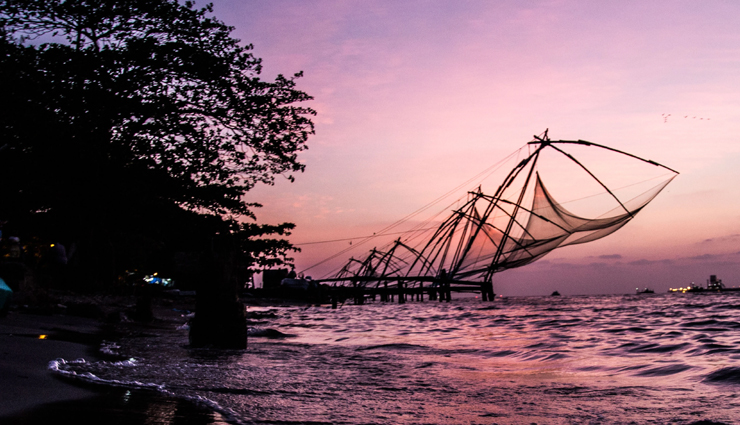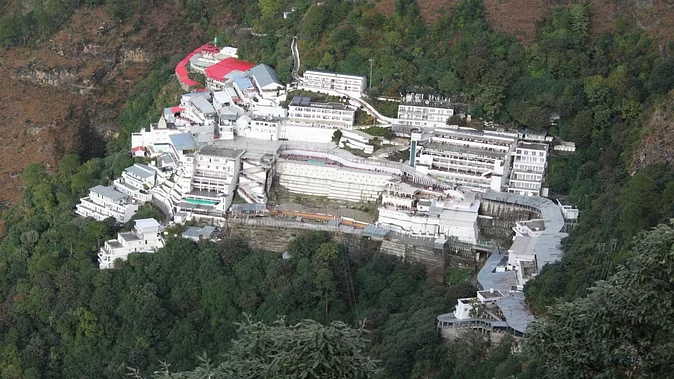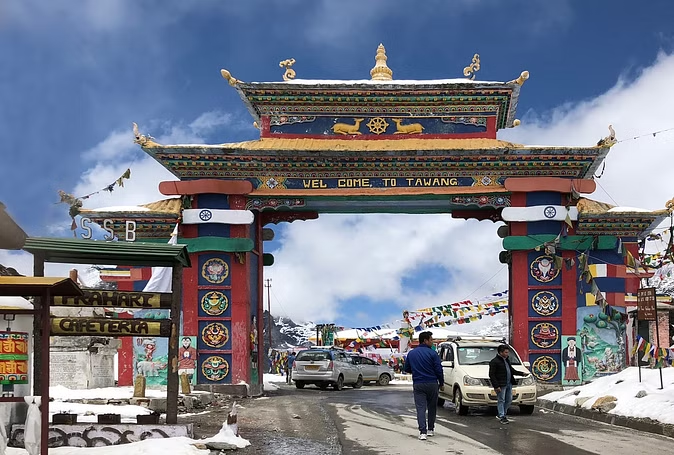The festival of Navratri continues when everyone fasts and fasts to seek the blessings of Mata Rani and reaches various temples of Mata to have darshan. There are many temples of Matarani across the country, some of which are famous for their magnificence and some for their beliefs. One such famous temple is that of Ambaji Mata in Gujarat, which every year thousands of devotees come to visit the Mata. Here the festival of Navratri is celebrated with great enthusiasm and enthusiasm. People perform the garba dance around the holy mother. One of the 51 Shaktipeeths of Maa Bhavani, this temple has immense reverence among the devotees of the mother. There are different beliefs and beliefs in the minds of the people regarding the temple. Today we are going to tell you about important information related to this temple.

History of Ambaji Temple
The place of Ambe Mata or Mother Goddess is a famous place of religious tourism for Hindu pilgrims. This temple is worshiped since early Vedic times and the goddess is accepted as Arasur ni Ambe Maa as the temple is situated on the top of the Aravalli Hills. Ambaji Temple is widely known as one of the most important Shakti Peethas and it is well known that people around the area keep chanting Ambaji's name as a holy hymn. Ambaji is known as the supreme cosmic controller of the world. Historically, no idol or picture of the goddess has ever been seen, although the priests painted the inner area above the ceiling in a way that shows the radiant image of the goddess.
The inner wall has a simple Gorkha which houses the famous golden Shakti Visa Shree Yantra which has a convex shape and contains 51 sacred Bija letters. Yantra can be worshiped with due care but photographs cannot be taken. Even the devotees are asked to tie their eyes with a white cloth before they worship the Yantra. History of Ambaji Temple says that Ambaji Temple has a strong tantric past and famous devotee Batuk Tantrik is associated with this temple.
There is no idol in the temple
Ambaji Temple in the Banaskantha district of Gujarat is the most popular temple of Durga Mata. Devotees have so much reverence for this temple that even Gujaratis living abroad come here to visit Maa Ambaji. The temple of Ambaji is also considered unique because there is not a single idol of the goddess here. Instead of an idol, there is a very sacred Shree Yantra, which is mainly worshipped. But, the special thing is that it is difficult to see Shree Yantra with normal eyes, nor can you take photographs here. Devotees worship it by blindfolding.

Mythological Significance of Ambaji Temple
One thing related to the Ambaji temple is popular that Lord Krishna's mundane rites were performed at this place and Lord Rama has also come here to worship Shakti. According to legend, in the Ramayana period, Lord Rama and Lakshmana came to Mount Abu or the forest of Abu in search of Sita after she was abducted by Ravana. Shringi advised him to worship Goddess Amba at Gabbar. The goddess gave him an arrow, called Ajay, with which Lord Rama finally killed Ravana.
In the Mahabharata period, the Pandavas worshiped Goddess Ambaji during their exile. He gave Bhimsen a garland called Ajaymala which would ensure victory in battle. He gave Arjuna divine garb to disguise as Brihanala in the last year of his exile while hiding in Virata's court. According to another legend, Rukmini, the daughter of King Bhishmak of Vidarbha, worshiped Goddess Ambaji here to make Lord Krishna her husband.
Goddess Shakti is the embodiment of the supreme cosmic power of the universe or Adi Shakti and she is known to be the conqueror of evil. The goddess emerges as a circle of light with arms on each side and is also worshiped as Mahishasura Mardini. Devotees visiting the Ambaji temple worship the divine cosmic power that incarnates in the form of Ambaji. The temple symbolizes the heart of Goddess Shakti and is one of the major Shakti Peethas in India.
The architecture of Ambaji Temple
Recent architectural research has shown that the Vallabhi king Arun Sen built the temple of Ambaji in the 14th century. He was a member of the Suryavanshi clan. Ambaji Temple is one of the 51 Shaktipeeths and holds spiritual as well as architectural significance. The heart of Goddess Sati is believed to have fallen at the site of the Ambaji temple. The architecture of Ambaji Temple is very artistic and wonderful, which reflects Indian culture and traditions. A majestic Kalash stands at the top of the temple at a height of 103 feet. The weight of the urn is more than 3 tonnes and it is made of a special type of milky white material. Made from marble, brought from the mines of Arasur (mountain) hill and plated with pure gold, attached with the sacred flag of Mata Ambaji and Trishul. The main temple of Ambaji is smaller than the sacred womb of Mataji in a huge mandap and sanctum sanctorum, in front of which is a huge Chahar where worship of Ambaji is usually done in Chahar Chowk.

The Nij Mandir is of medium size and does not have any idol or picture of the Goddess. Sri Asuri Mata Ambaji is believed to reside in a small Gorkha in the walls of the inner sanctum. Arsuri Mata Ambaji Temple is run by a temple trust which has been operating for the last 100 years. The trust has also arranged for a light and sound show for tourists and pilgrims. Artistic coverings are present in most parts of the temple like Nij Mandir Garbha Griha, Dwara Shakti, Aangan Shakti, and other areas.
A different view is seen in Navratri
There is an influx of devotees throughout the year in the Ambaji temple, but during Navratri, there is a different atmosphere here. During Navratri, grand celebrations are held at the Ambaji temple. Garba and other folk dances are offered by Gujaratis on the temple premises. For nine days of Navratri, the devotees worship the mother with full devotion. Not only this, dances like Bhavai and Garba are organized on the temple premises on this special occasion. Along with this, Saptshati is also recited.


